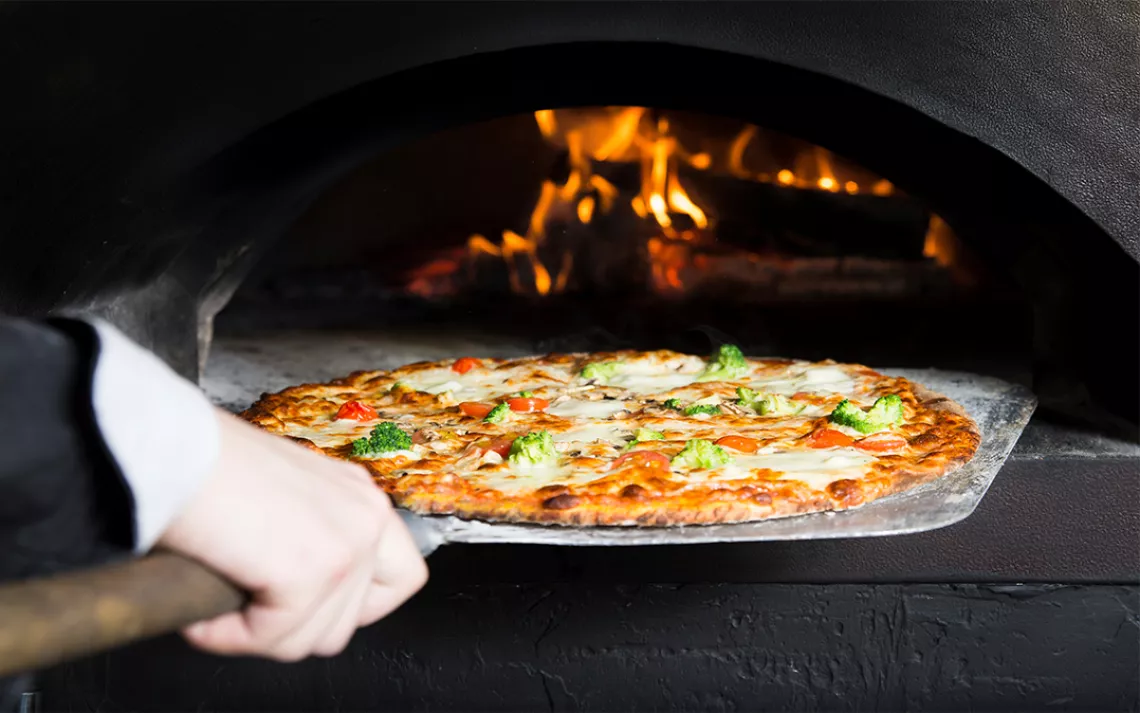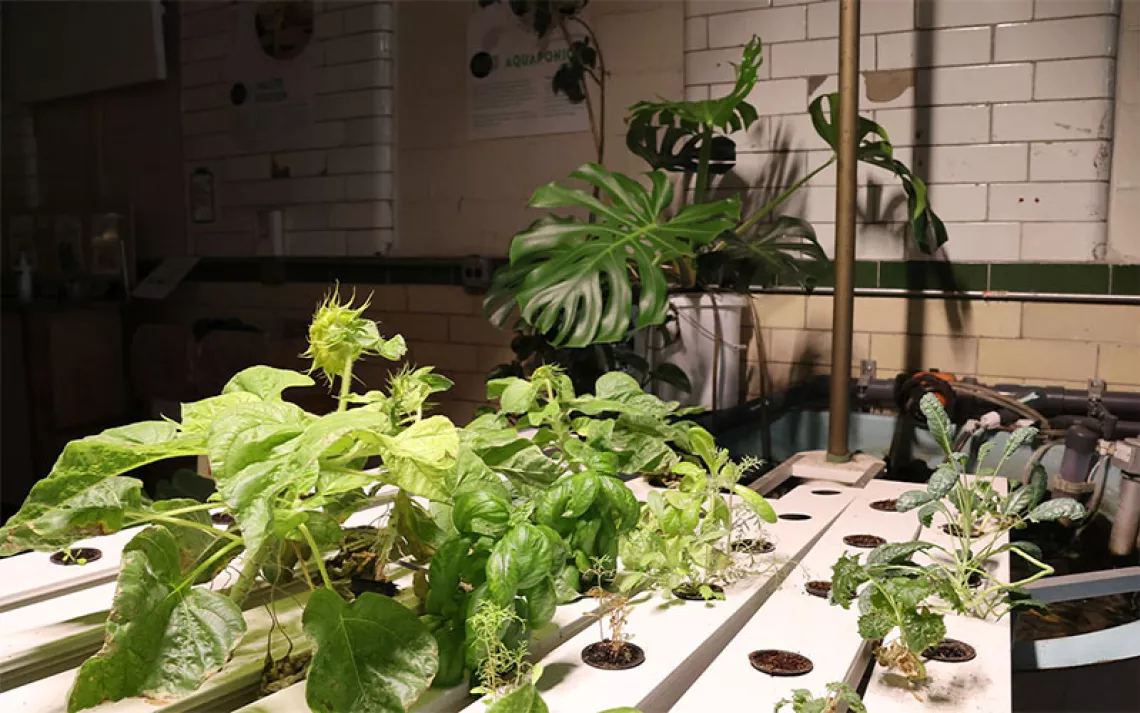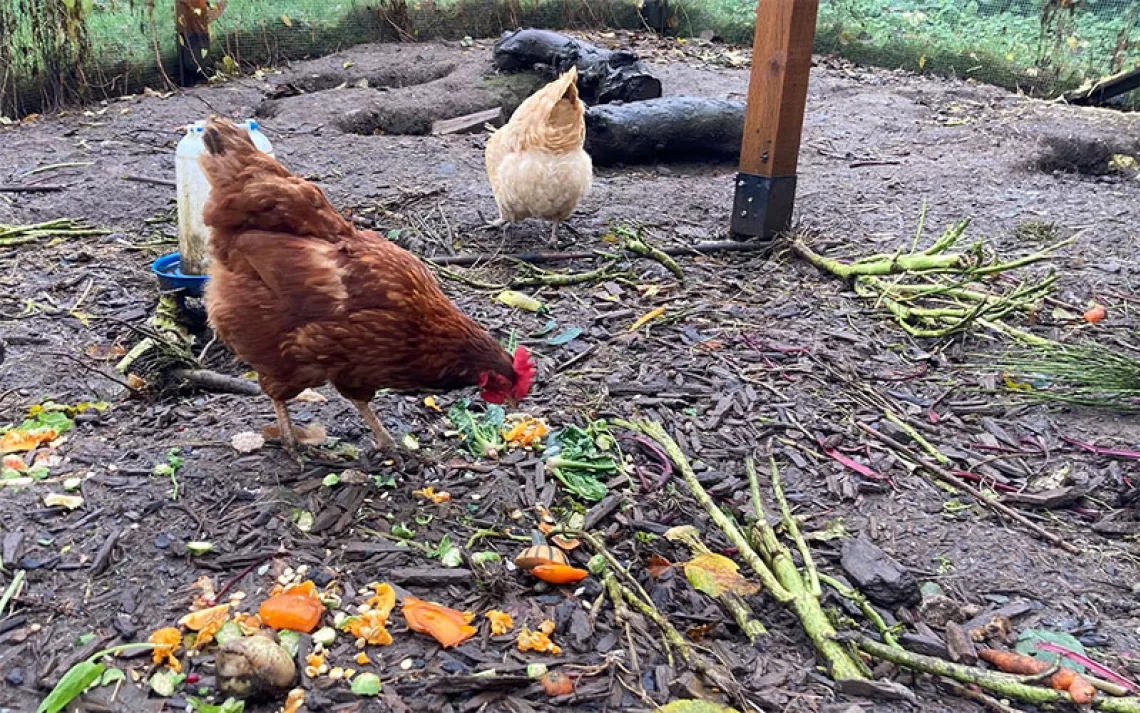Ciao Verde
Toast National Pizza Month with a slice of eco-awareness

Photo by Photografeus/iStock.
Pizza enthusiasts, you might want to find the nearest cafe and sit down for this: Studies show pizzas made by old-fashioned wood-fired stoves to be significant contributors to pollution. What’s more, forests contribute more than 307,000 tons of wood each year to pizzerias.
Why is so much wood burning?
The first documented use of the word “pizza” traces back to the small, central Italian town of Gaeta, circa 997 AD. Peasants used wood-fired ovens to turn leftover dough into primitive prototypes of those sublime pies we all love for their chewy crusts and smoky wood flavor. Eventually, pizza made its way around the world, where it was increasingly prepared in cheaper, easier-to-maintain gas and electric ovens. The first U.S. pizzeria, Lombardi’s, opened in New York City in 1905, and became famous for its crisp, charred coal-oven-prepared pies. Luckily for the earth, coal-fired pizza relies on relatively cleaner-burning anthracite, and comprises but a tiny sliver of Big Coal’s output. However, the popularity of gourmet pizza has spiked in recent years—specifically authentic Neapolitan pie, the creation of which requires a domed, wood-fired oven, which contributes more and more greenhouse emissions.
In an effort to combat recent record-breaking levels of air pollution in pizza’s motherland, Italian authorities last year prohibited use of wood-fired pizza ovens in a small town near Naples for three months. The ordinance was met with public protests, and some outraged citizens called for the pizza-offending mayor’s resignation. On Earth Day 2014, New York City Mayor Bill de Blasio introduced an ordinance requiring pizzerias to install filters on wood- and coal-fired ovens, to similar effect. Outraged pizza barons successfully fought the measure, reasoning their contribution to the city’s pollution was negligible. So, your wood-fired pizza is safe—for now.

Sign up to receive Sierra News & Views
Get articles like this one sent directly to your inbox weekly.
With this action you affirm you want to receive Sierra Club communications and may vote on policy designated by the Sierra Club Board.
I went on a quest to find out if, and how, the U.S. pizza industry plans to reconcile this favorite comfort food with a little eco-sensitivity. The answer was, at least on a macro scale, not too much. Kelsey Dalzell, a communications associate with the Green Restaurant Association, notes that U.S. pizza restaurants are increasingly packaging their pies in boxes containing post-consumer waste, delivering pizza by bike or foot, composting, and using energy-efficient kitchen equipment. But, she says that in terms of oven preparation, “our pizza restaurants otherwise aren’t doing anything much different.”
Many pizza professionals resent what they perceive as scapegoating. Says one industry insider, “Pizzerias aren’t the ones producing major problems. If you want to prevent pollution, it seems silly to start with the little guys at the bottom, when major companies out there are the ones producing tons and tons of pollutants.”
Some individual restaurateurs, though, are doing what they can to take a bite out of pollution and deforestation. Brian Petruzzi, CEO and founder of the three year-old, New Jersey-based 1000 Degrees Neapolitan Pizza Franchise, contracted Naples-based manufacturers to custom-design a natural gas-burning version of traditional wood-fired stoves. A biochem major with a minor in conservation biology, Petruzzi sought the cleanest version of Neapolitan pie partially out of his belief that earth is “all one related organism.” He also wanted to launch a far-reaching geographic franchise that could be replicated from New Jersey to California and a “100% consistent” product. “We knew we’d eventually have trouble because of emissions regulations,” he says. It’s why each of 1000 Degrees’ 30-some locations cooks their pies in the same, 7,000-pound behemoth of imported Italian brick and cement. “Italian men come over and build the custom oven for you—we’re the only concept out there that does this,” says Petruzzi. “It took six months of R&D, but now it puts out a picture-perfect pizza without the manipulation of wood. The only difference with our pie is maybe a little less smokiness.”
Leonardo Giordano, a Sicilian native and the owner of Staten Island’s Mona Lisa Pizza, a parlor revered for its wood-fired pies, says he’s gradually switching to gas ovens, too. In the meantime, Giordano is making an effort to purchase compressed, recycled, additive-free wood from small farmers. “It costs thrice as much,” he says, “meaning, you need to keep your price higher, which kinda defeats the purpose of pizza as a low-cost alternative to fine dining.”
Gino Rocco, owner of Chicago’s Panino’s Pizzeria, uses gas-fired ovens, except for one “wood-assisted” stove, specifically used for Neapolitan pies. “I still fire up the gas to bring up the temperature, but then throw a couple logs on there to get that wood-fired effect and flavor,” he says. “It’s about 80 percent gas, 20 percent wood.”
In Chicago, no regulations exist at this time, but Rocco keeps close tabs on what’s happening in his native Italy, where it seems the writing is in the melted mozzarella. “Depending on the municipality, they’re converting to electric or gas, and requiring filters that remove the carbon from the wood—expensive gadgets,” he says. “Anyone who’s been grandfathered in, though, is able to keep using wood.” Rocco says Italian pizzerias are also starting to make use of man-made chips. “They’re gonna start to make rules over here, too,” he predicts. “At least it’ll cut down on the ashes mess.”
Restaurateurs and pizza experts say customers have not expressed significant concern about the eco factor of their ovens. However, those of you on a quest for a greener slice may want to start asking the hard questions about what went into your next pie before you sink in your teeth.
If there’s anything that can’t be topped, it’s a big pizza with a minuscule carbon footprint.
 The Magazine of The Sierra Club
The Magazine of The Sierra Club



